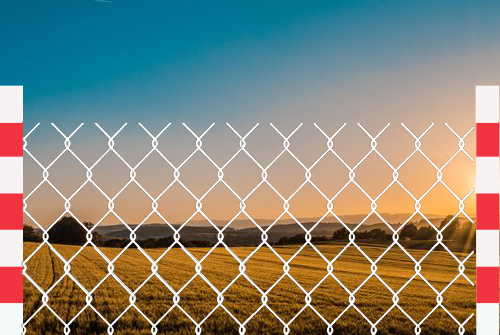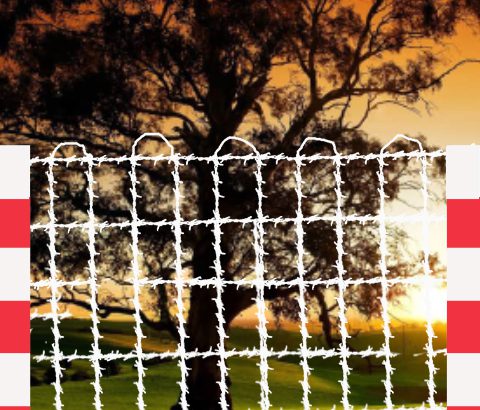
Fencing Model: Chain Link Fence
A chain-link fence (also referred to as wire netting, wire-mesh fence, chain-wire fence, cyclone fence, hurricane fence, or diamond-mesh fence) is a type of woven fence usually made from galvanized or LLDPE-coated steel wire. The wires run vertically and are bent into a zig-zag pattern so that each “zig” hooks with the wire immediately on one side and each “zag” with the wire immediately on the other. This forms the characteristic diamond pattern seen in this type of fence.
Installation:
The installation of chain-link fence involves setting posts into the ground and attaching the fence to them. The posts may be steel tubing, timber or concrete and may be driven into the ground or set in concrete. End, corner or gate posts, commonly referred to as “terminal posts”, must be set in concrete footing or otherwise anchored to prevent leaning under the tension of a stretched fence. Posts set between the terminal posts are called “line posts” and are set at intervals not to exceed 10 feet. The installer attaches the fence at one end, stretches it, and attaches at the other, easily removing the excess by “unscrewing” a wire. In many cases, the installer stretches a bottom tension wire, sometimes referred to as “coil wire”, between terminal posts to help minimize the in and out movement that occurs at the bottom of the chain-link mesh between posts. Top horizontal rails are used on most chain-link fences, although not necessary if the terminal posts are braced correctly. A top tension wire may be used in this situation. Bottom rails may be added in lieu of bottom tension wires, and for taller fences, 10 feet or more, intermediate horizontal rails are often added. Finally, the installer ties the fence to the line posts and rails with steel or aluminum wire with a hook on one end called “Fence Ties”. The bottom tension wire should be secured to the line posts and the chain-link mesh “hog ringed” to the tension wire 2′ on center.



